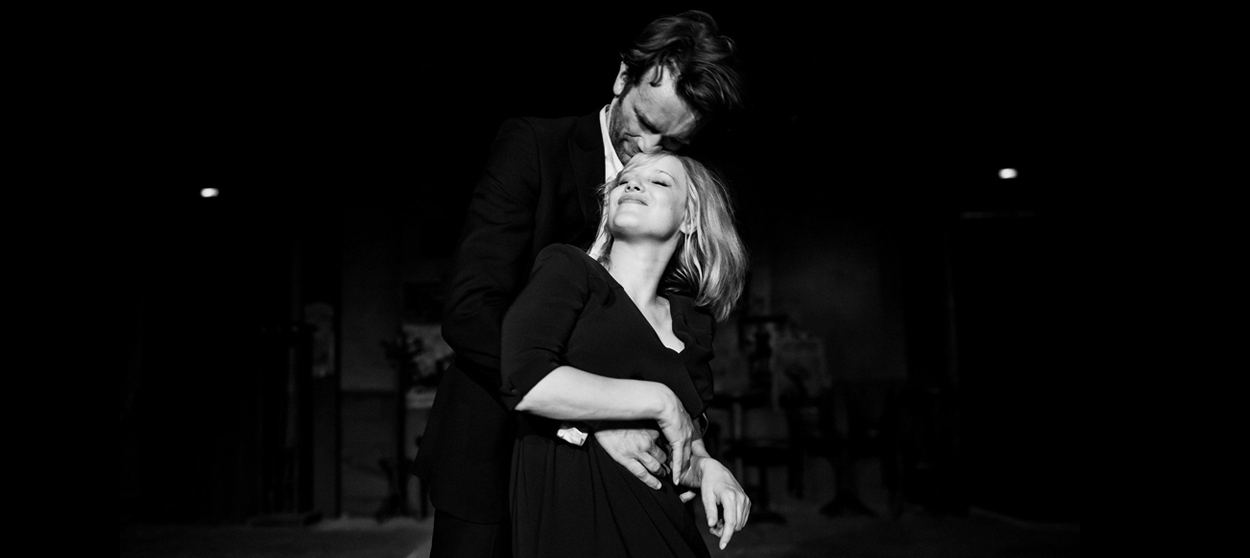The foreign language film that should beat Roma
Cold War is better than Roma


There may be no stopping Roma. The Spanish-and-Mixtec-language film has been unbeatable since it won the Golden Lion at its premiere in Venice, collecting accolades through the fall and winter from local film critic circles. Now considered the frontrunner for the Academy Award for Best Picture, Roma is so obvious a choice for Best Foreign Language Film — that blink-and-you-miss-it category announced somewhere between "Sound Editing" and "Visual Effects" — that it seems almost worth preemptively handing its team the statuette now.
But let's not get ahead of ourselves.
On Tuesday, the Academy released its foreign language shortlist, a slate that includes heavyweights like Cannes Film Festival Palme d'Or winner Shoplifters (Japan), the Steven Yeun-starring Murakami adaptation Burning (South Korea), and the Lebanese drama Capernaum, which received a 15-minute standing ovation at its premiere. And even with Mexico's Roma looming above the category as the obvious favorite, it is ultimately a romantic epic from Poland that most deserves to win the category at the 91st Academy Awards.
The Week
Escape your echo chamber. Get the facts behind the news, plus analysis from multiple perspectives.

Sign up for The Week's Free Newsletters
From our morning news briefing to a weekly Good News Newsletter, get the best of The Week delivered directly to your inbox.
From our morning news briefing to a weekly Good News Newsletter, get the best of The Week delivered directly to your inbox.

Cold War is Polish director Paweł Pawlikowski's follow-up to Ida, which won the Academy Award for Best Foreign Language Film in 2015. Set behind the Iron Curtain beginning in the late 1940s, the story follows the decades-spanning romance between a folk music director (Tomasz Kot) and his cutthroat protégé (Joanna Kulig). In addition to having the soundtrack of the year, Cold War is a simply beautiful film, from its cinematography down to Kulig's desperate, but never over-the-top, performance.
Roma and Cold War are a worthy pair of competitors. Both films are end-of-year releases by competing streaming giants Netflix and Amazon (Cold War begins its Oscar-qualifying theatrical run in New York and Los Angeles on Friday and will be available for streaming next year; Roma is streaming now). Both are personal period pieces, with Roma taking place in 1970s Mexico City and loosely based on director Alfonso Cuarón's family, while Cold War spans the second half of the century and is inspired by Pawlikowski's parents.
Roma and Cold War are both shot in moody black-and-white, reminiscent of period-appropriate film stock. But this is where the similarities end.
In Roma, Cuarón does his own cinematography, breaking from his longtime collaborator Emmanuel Lubezki, even though his technical repertoire seems limited to tracking shots and circular pans. Roma's gesture toward Italian neorealism, and aping Federico Fellini, falls emotionally flat, and the widescreen 2.35 aspect ratio makes the camera all the more remote from its already distant subjects. Cold War, by contrast, uses a tight, intimate Academy ratio, with Pawlikowski reteaming with Ida cinematographer Łukasz Żal, who carefully balances each frame. His tracking shots are imaginative and engaging — a horizontal slide along the back of a row of singers, for example, or a drunken, bobbing dance with the actress to "Rock Around the Clock." Żal's best virtue, though, is realizing when stillness is required, a patience Cuarón hasn't fully mastered.
A free daily email with the biggest news stories of the day – and the best features from TheWeek.com
Roma uses the small-scale story of a middle-class family and their loyal maid as a lens on class and politics in the 1970s, although many have pointed out the problematic portrayal of the help, including the protagonist Cleo. Several critics have gone as far as to liken the film to a coffee table book or photo album, a kind of glossy, nostalgic snapshot of the past. Cold War, on the other hand, leans into its fairytale-like narrative, never pretending to reflect reality, so its glossing doesn't feel so much like artifice but polish.
Where Roma truly rivals Cold War is in the acting. Roma's Yalitza Aparicio is more vibrant an actress than her character is written in the script, while Joanna Kulig has a don't-take-your-eyes-off-her quality that I can't wait to see more of in her promising future. And while the actresses sadly aren't likely to face each other in the Oscar category (Aparicio could be nominated, although if the Golden Globes are any indication, voters aren't responding to Roma's acting), the women delivered two of the most impressive performances of the year, and I wouldn't envy any jury who had to make a decision between them.
Voters will in all likelihood have a different difficult decision on their hands come February. While Cold War is sadly too obscure a film to be nominated for Best Picture, it fully deserves to win the Foreign Language award as an acknowledgment of its technical brilliance, even if Roma takes Best Picture. Because where Roma strains, Cold War sings. And it's magnificent.
Jeva Lange was the executive editor at TheWeek.com. She formerly served as The Week's deputy editor and culture critic. She is also a contributor to Screen Slate, and her writing has appeared in The New York Daily News, The Awl, Vice, and Gothamist, among other publications. Jeva lives in New York City. Follow her on Twitter.
-
 The rise of runcations
The rise of runcationsThe Week Recommends Lace up your running shoes and hit the trails on your next holiday
-
 Amorim follows Maresca out of Premier League after ‘awful’ season
Amorim follows Maresca out of Premier League after ‘awful’ seasonIn the Spotlight Manchester United head coach sacked after dismal results and outburst against leadership, echoing comments by Chelsea boss when he quit last week
-
 ‘Jumping genes': How polar bears are rewiring their DNA to survive the warming Arctic
‘Jumping genes': How polar bears are rewiring their DNA to survive the warming ArcticUnder the radar The species is adapting to warmer temperatures
